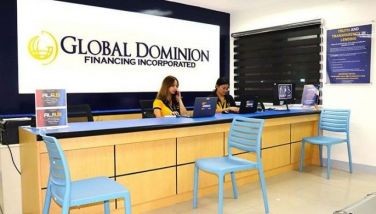The Next Big Thing
November 29, 2002 | 12:00am
The Next Big Thing is under our noses. (Sorry, not your moustaches!) It is IT and business process outsourcing for health care.
This observation came to me when I saw my dad at the hospital. He had a minor heart attack. I passed the nurses’ station on the way to my dad’s room. Documentation seemed to be all in manually written paper for medication instruction, diagnoses and nurse schedules on the white board. There was a computer there but I think it was just there to capture the drugs the nurses dispense to their patients, sort of like a point-of-sale register when you do your groceries. I guess billing is top on their priority for computerization. (I decided against telling you the name of the hospital.)
In the United States, the baby boomer generation is now aging. Aging bodies only mean more frequent visits to the hospital or to the doctor. It seems the warranty on good health expires when you hit 40 and the ailments start shortly thereafter. The health care industry will grow faster than population growth. An estimate of more than 15 percent a year would be conservative.
Historically, hospitals have been slow to spend on technology, except for those MRI machines and other scanners that can command premium patient fees. Banks in the US typically spend seven to nine percent of their annual budgets on information technology. In contrast, hospitals, on average, spend only five percent. "Medicine today remains a largely paper-driven system," says Dr. Henry Lowe of the Stanford University School of Medicine. (Business Week Online, October 2002). In 1996, the US enacted the Health Insurance Portability and Accountability Act, which could drive a lot of the hospitals to upgrade their electronic record-keeping systems for both security and portability.
Medical litigation continues unabated, causing the increase in malpractice insurance premiums that have some doctors actually leaving the profession. Litigation has forced medical practitioners to document their every procedure to defend their actions. (Medical transcription, anyone?)
Business process outsourcing, as an industry, has been estimated from a conservative 15 percent to a high of 30 percent annually.
Combine these trends and we have a terrific target market. Let me give you some possible applications.
Data at the bedside. Through the magic of wireless connectivity and the growing power of PDAs (personal digital assistants), doctors and nurses can have the patient’s history not only from this visit but a patient’s complete medical history. This would save both time and maybe lives since incompatible drug therapies can be avoided.
Data and robots at the operating table. Doctors can have more precise, non-invasive devices to view the problem through fiber-optic cameras, and with small robots, smaller incisions and faster recovery, which means increased turnover for the hospital. The key difference of these devices in the last decade has been the operating system; they now run on the Windows platform and maneuvered through joysticks.
Data at the doctor’s desk. In 1999, the US National Academy of Sciences reported that at least 44,000 cases of accidental death annually could be attributed to incorrect drug dosages or misread prescriptions. Surely with the power of the Web and the PDA, the doctor can just send the prescription to the pharmacy which, in turn, can send the medicine directly to the patient’s home. (Then again, maybe a cheaper alternative is to have doctors take penmanship courses.)
Data for drug research. Clinical trials continue to need thousands of live test patients who fit the profile. One set is given the test drug and the other, a placebo. (Of course, I would enjoy giving an enema to those energy sources I described in my last column!) Thousands of patients mean millions of data points, hence the need for back-office data massagers.
I believe the Philippines is well-positioned to take pole advantage on medical transcription as we continue to produce nurses and other health care professionals and if we continue to build our English skills. I believe our local IT programmers are able to deliver world-class medical applications as well, but the key to penetrating this market is track record.
My Two Cents: Although the top IT companies in the US still complain that corporate expenditures for technology will continue to stall, there is a silver lining out there! BPO in health care will grow at higher than 20 percent.
Dickson Co is CFO (C is for Cheap) of Dfnn, Intelligent Wave and HatchAsia. For comments and suggestions, e-mail [email protected]
This observation came to me when I saw my dad at the hospital. He had a minor heart attack. I passed the nurses’ station on the way to my dad’s room. Documentation seemed to be all in manually written paper for medication instruction, diagnoses and nurse schedules on the white board. There was a computer there but I think it was just there to capture the drugs the nurses dispense to their patients, sort of like a point-of-sale register when you do your groceries. I guess billing is top on their priority for computerization. (I decided against telling you the name of the hospital.)
In the United States, the baby boomer generation is now aging. Aging bodies only mean more frequent visits to the hospital or to the doctor. It seems the warranty on good health expires when you hit 40 and the ailments start shortly thereafter. The health care industry will grow faster than population growth. An estimate of more than 15 percent a year would be conservative.
Historically, hospitals have been slow to spend on technology, except for those MRI machines and other scanners that can command premium patient fees. Banks in the US typically spend seven to nine percent of their annual budgets on information technology. In contrast, hospitals, on average, spend only five percent. "Medicine today remains a largely paper-driven system," says Dr. Henry Lowe of the Stanford University School of Medicine. (Business Week Online, October 2002). In 1996, the US enacted the Health Insurance Portability and Accountability Act, which could drive a lot of the hospitals to upgrade their electronic record-keeping systems for both security and portability.
Medical litigation continues unabated, causing the increase in malpractice insurance premiums that have some doctors actually leaving the profession. Litigation has forced medical practitioners to document their every procedure to defend their actions. (Medical transcription, anyone?)
Business process outsourcing, as an industry, has been estimated from a conservative 15 percent to a high of 30 percent annually.
Combine these trends and we have a terrific target market. Let me give you some possible applications.
Data at the bedside. Through the magic of wireless connectivity and the growing power of PDAs (personal digital assistants), doctors and nurses can have the patient’s history not only from this visit but a patient’s complete medical history. This would save both time and maybe lives since incompatible drug therapies can be avoided.
Data and robots at the operating table. Doctors can have more precise, non-invasive devices to view the problem through fiber-optic cameras, and with small robots, smaller incisions and faster recovery, which means increased turnover for the hospital. The key difference of these devices in the last decade has been the operating system; they now run on the Windows platform and maneuvered through joysticks.
Data at the doctor’s desk. In 1999, the US National Academy of Sciences reported that at least 44,000 cases of accidental death annually could be attributed to incorrect drug dosages or misread prescriptions. Surely with the power of the Web and the PDA, the doctor can just send the prescription to the pharmacy which, in turn, can send the medicine directly to the patient’s home. (Then again, maybe a cheaper alternative is to have doctors take penmanship courses.)
Data for drug research. Clinical trials continue to need thousands of live test patients who fit the profile. One set is given the test drug and the other, a placebo. (Of course, I would enjoy giving an enema to those energy sources I described in my last column!) Thousands of patients mean millions of data points, hence the need for back-office data massagers.
I believe the Philippines is well-positioned to take pole advantage on medical transcription as we continue to produce nurses and other health care professionals and if we continue to build our English skills. I believe our local IT programmers are able to deliver world-class medical applications as well, but the key to penetrating this market is track record.
My Two Cents: Although the top IT companies in the US still complain that corporate expenditures for technology will continue to stall, there is a silver lining out there! BPO in health care will grow at higher than 20 percent.
BrandSpace Articles
<
>
- Latest
Latest
Latest
November 11, 2024 - 1:43pm
By EC Toledo | November 11, 2024 - 1:43pm
November 6, 2024 - 7:16pm
November 6, 2024 - 7:16pm
November 6, 2024 - 4:50pm
November 6, 2024 - 4:50pm
November 4, 2024 - 9:12am
November 4, 2024 - 9:12am
November 1, 2024 - 9:00am
By Aian Guanzon | November 1, 2024 - 9:00am
October 31, 2024 - 12:02pm
October 31, 2024 - 12:02pm
Recommended






























